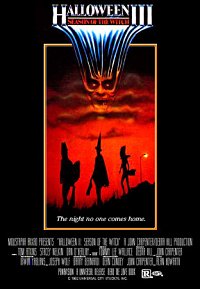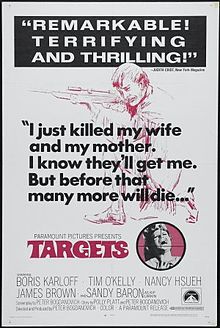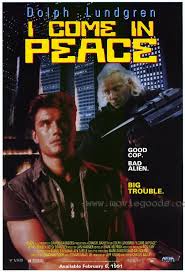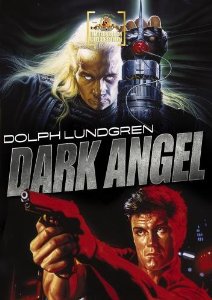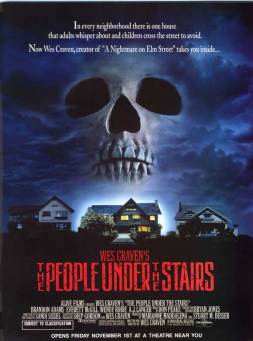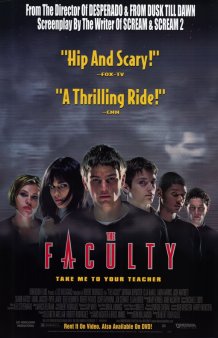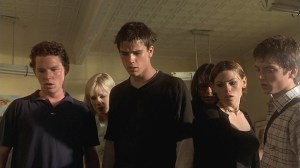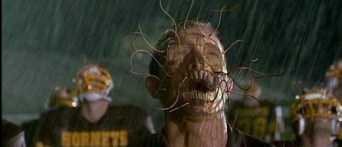Tag Archives: cult movies
Plotopsy Podcast #25 – Halloween III: Season of the Witch
The Wraith
The Wraith
Today’s feature is the 1986 car-ghost revenge movie, The Wraith, starring two of the industry’s most infamous figures: Randy Quaid and Charlie Sheen.
The plot of The Wraith is summarized on Rotten Tomatoes as follows:
This supernatural teen action film is about a strange reincarnation with the emphasis on “car.” Young Jamie is killed by the evil Packard (Nick Cassavetes) and his gang of thugs because Jamie was caught romancing Keri (Sherilyn Fenn), Packard’s girlfriend. Suddenly “the Wraith” — a black turbo racing car shows up to challenge Packard (sounds like a Detroit auto duel) whose livelihood comes from stealing cars. What happens next is an endless series of car chases as Packard’s gang of punks start to bite the dust, one by one. Then Jake (Charlie Sheen) comes into town on a motorcycle and makes a play for Keri, giving rise to old animosities one more time.
The Wraith was written and directed by Mike Marvin, whose other credits include writing Hot Dog: The Movie and directing Hamburger: The Motion Picture.
 The cinematographer for the film was Reed Smoot, who has worked significantly filming concert movies like Justin Bieber: Never Say Never and Jonas Brothers: The 3D Concert Experience, and also shot Homeward Bound: The Incredible Journey.
The cinematographer for the film was Reed Smoot, who has worked significantly filming concert movies like Justin Bieber: Never Say Never and Jonas Brothers: The 3D Concert Experience, and also shot Homeward Bound: The Incredible Journey.
The Wraith featured work by two primary editors: Scott Conrad (Class of 1999, A Boy And His Dog, Cat’s Eye, Rocky) and Gary Rocklen, who never had any other editing credits.
Two people were given credit for the music in The Wraith: J. Peter Robinson (Beeper, New Nightmare, Wayne’s World, The Wizard, The Gate, Blind Fury) and Michael Hoenig (Class of 1999, Dracula 3000, The Gate).
 The producers on The Wraith were Jeffrey Sudzin (Confessions of a Dangerous Mind, Brainscan, Idle Hands, Fright Night Part 2), John Kemeny (The Gate, Iron Eagle II), and Buck Houghton (The Twilight Zone, Hawaii Five-O).
The producers on The Wraith were Jeffrey Sudzin (Confessions of a Dangerous Mind, Brainscan, Idle Hands, Fright Night Part 2), John Kemeny (The Gate, Iron Eagle II), and Buck Houghton (The Twilight Zone, Hawaii Five-O).
The cast of The Wraith includes Charlie Sheen (Hot Shots, Men At Work, Platoon, Wall Street, Major League), Randy Quaid (Christmas Vacation, Vacation, Kingpin, Independence Day, The Last Detail, Heartbeeps), Nick Cassavetes (Face/Off, The Astronaut’s Wife, Blind Fury, Class of 1999 II), Sherilyn Fenn (Boxing Helena, Wild At Heart), and Clint Howard (Evilspeak, The Dentist II, Carnosaur, Night Shift, Ice Cream Man, Santa With Muscles).
The mysterious, ghostly car featured in the film was a Dodge M4S Turbo Interceptor, which was built by Chrysler and PPG industries at an estimated cost of $1.5 million. Today, the original car is on display at the Chrysler Museum in Auburn Hills, Michigan, and a replica used in the shoot was up for sale last summer online.
 Financially, The Wraith was far from a huge hit, grossing only $1.4 million domestically on a production budget of $2.7 million. However, the movie’s international grosses managed to get the film to break even with its budget.
Financially, The Wraith was far from a huge hit, grossing only $1.4 million domestically on a production budget of $2.7 million. However, the movie’s international grosses managed to get the film to break even with its budget.
Critically, The Wraith is far more fondly remembered by audiences than film critics: it currently holds Rotten Tomatoes aggregate scores of 27% from critics and 63% from audiences, along with an IMDb user rating of 5.9/10.
 The Wraith isn’t a terribly deep movie, and there isn’t much beyond surface level aesthetics that will stick with you. The characters and story are frankly about as paper-thin as they come. As Leonard Maltin put it, this is arguably a movie that is for people who “favor fast cars and lots of noise.” That said, boy does this movie bring it in the department of fast cars and lots of noise.
The Wraith isn’t a terribly deep movie, and there isn’t much beyond surface level aesthetics that will stick with you. The characters and story are frankly about as paper-thin as they come. As Leonard Maltin put it, this is arguably a movie that is for people who “favor fast cars and lots of noise.” That said, boy does this movie bring it in the department of fast cars and lots of noise.
The races are shot well, the cars themselves are arguably more distinctive and memorable than any of the drivers behind them, and the stunts and effects are marvelous: if you want to see cars in an old-school movie explosion, this movie is for you. There may not be anything beneath the surface of the film, but that surface has a pretty nifty sheen to it.
 I do feel like this movie is oddly anachronistic: outside of the soundtrack and the sheer Charlie Sheen-ness of it all, this seems like it would have fit in with the old days of grindhouse car movies. Honestly, if this movie were made today, people would probably laud it for its ode to a bygone era. If you slap some Kavinsky over it and put a leather jacket on Ryan Gosling again, there might just be a cool remake or re imagining here waiting to be cooked up.
I do feel like this movie is oddly anachronistic: outside of the soundtrack and the sheer Charlie Sheen-ness of it all, this seems like it would have fit in with the old days of grindhouse car movies. Honestly, if this movie were made today, people would probably laud it for its ode to a bygone era. If you slap some Kavinsky over it and put a leather jacket on Ryan Gosling again, there might just be a cool remake or re imagining here waiting to be cooked up.
Overall, I think there is enough good here to make it worth checking out. There are a lot of missed opportunities to make this a true horror or suspense film, but the stunts and races just about make up for the lacking plot and cartoonish characters. Hopefully, someone will take this concept and build on it someday, because I feel like there is a lot more potential here than was tapped into with The Wraith.
The Thing With Two Heads
The Thing With Two Heads
Today I’m going to take a quick look at a b-movie classic: The Thing With Two Heads.
The Thing With Two Heads was a 1972 low budget movie that was presented by the notorious Samuel Z. Arkoff, and distributed by American International Pictures. The film’s writer/director, Lee Frost, had a long career making exploitation features, including 1975’s The Black Gestapo.
The plot of The Thing With Two Heads is summarized on IMDb as follows:
A rich but racist man is dying and hatches an elaborate scheme for transplanting his head onto another man’s body. His health deteriorates rapidly, and doctors are forced to transplant his head onto the only available candidate: a black man from death row.
The movie primarily stars Academy Award winner Ray Milland and former NFL star Roosevelt Grier as the mismatched central pair.
Effects legend and winner of many Academy Awards Rick Baker appears briefly in the film in a gorilla suit, and apparently did work on the effects as well, though without credit.
The score for The Thing With Two Heads was provided by Richard O. Ragland, who also provided music for Q: The Winged Serpent, The Touch of Satan, and Grizzly, among many others low budget features.
Nowadays, The Thing With Two Heads is regarded as an off-color cheese-ball classic of trash cinema, that certainly has a bit of a cult following. Roger Ebert gave the movie a 1-star review, and IMDb currently has it at an unenviable 4.1/10 from its user base, but it certainly hasn’t disappeared into absolute obscurity by any means.
The Thing With Two Heads is certainly a movie made for its time period. This reminded me in some ways of Bone, and in other ways of the standard field of blaxploitation movies that came out in the 1970s. However, its goofiness kind of defies classification: it is hard to call this anything other than a b-movie, though there are definitely blaxploitation elements. It isn’t what anyone would call progressive in its portrayal of race, but given the time period, it certainly could have been worse.
The movie certainly isn’t good by any stretch of the imagination, but it has some odd value as a silly relic of its time period. For b-movie fans who can stomach lesser Roger Corman movies, The Thing With Two Heads shouldn’t be any trouble, and might be worth checking out. The effects and stunts are in particular pretty hilariously inept, which are almost worth the experience on their own.
Targets
Targets
Today, I’m going to take a look at a controversial cult classic: Peter Bogdanovich’s 1968 feature, Targets.
The plot of Targets is summarized on IMDb as follows:
An elderly horror-film star, while making a personal appearance at a drive-in theater, confronts a psychotic Viet Nam War veteran who’s turned into a mass-murdering sniper.
Targets was written, produced, edited, and directed by Peter Bogdanovich, a lauded film critic who became one of the stalwart figures of the New Hollywood movement. After Targets, he built a strong career that included features like The Last Picture Show, What’s Up, Doc?, Mask, Paper Moon, Daisy Miller, and At Long Last Love, among many others. His wife at the time, Polly Platt, is credited as both his co-writer and the film’s production designer. She later gained more notoriety as a producer on such movies as Bottle Rocket, The War of The Roses, Broadcast News, and Say Anything.
 The cinematographer on Targets was Laszlo Kovacs, who had a lengthy and notable career shooting films like Easy Rider, Shampoo, Paper Moon, Say Anything, and New York, New York.
The cinematographer on Targets was Laszlo Kovacs, who had a lengthy and notable career shooting films like Easy Rider, Shampoo, Paper Moon, Say Anything, and New York, New York.
Roger Corman was an uncredited executive producer for the film, and was instrumental in its creation. He essentially gave Bogdanovich free reign on the project with a set budget, provided that he was able to make use of stock footage from a previous Corman production, The Terror, and found a way to use the elderly Boris Karloff for just two days. Ultimately, Karloff was needed for five days of shooting, but he waived his fee thanks to his fondness for the screenplay.
 The shooting spree featured in Targets was inspired by true events, most notably the 1965 Highway 101 sniper attack, in which a sniper fired on moving cars from a nearby hill, and the Charles Whitman shootings at the University of Texas in 1966. The realistic depictions of mass shootings caused the film to be particularly controversial, even for a b-feature intended for a niche audience.
The shooting spree featured in Targets was inspired by true events, most notably the 1965 Highway 101 sniper attack, in which a sniper fired on moving cars from a nearby hill, and the Charles Whitman shootings at the University of Texas in 1966. The realistic depictions of mass shootings caused the film to be particularly controversial, even for a b-feature intended for a niche audience.
Samuel Fuller, a noted writer and director in his own right, apparently contributed significantly to the screenplay for Targets, but turned down credit for the movie.
Targets is regarded as one of the starting points for a new era in film horror, as well as a key point in the development of New Hollywood. Books like Shock Value and Easy Riders, Raging Bulls have gone into detail about the film’s production, and how it influenced Bogdanovich’s career and the way audiences thought about horror.
Targets currently has Rotten Tomatoes ratings of 88% from critics and 81% from audiences, along with an IMDb user score of 7.4/10. Its reputation over the years has only grown, as its influence has been felt and appreciated both in and outside of the horror genre.
Targets is, above all else, an effectively eerie movie. The lack of a soundtrack in particular gives the tense and shocking sequences a more pronounced and uncomfortable vibe. There are no cues to indicate what the audience’s reaction should be to any given action, which plays into the fact that the audience is subjected to the killer’s perspective for most of the movie. He doesn’t react to killing someone, and the film doesn’t either. I think that this apect, more so than the shooting sequences themselves, is what made the film so controversial and uncomfortable for people. Murder wasn’t a new topic for film, but showing it from a killer’s perspective was (and still is) genuinely unnerving.
While there are a lot of impressive elements to Targets, it is far from a perfect movie. As with most debut features, it is a little rough around the edges, particularly when it comes to the pacing of events. There are some distinct moments where the lulls in progress last a bit too long, but that said, this is a damn impressive first flick. While Bogdanovich arguably peaked early and has waned since the 1970s, this film provides a good overarching sense of his talents and potential.
 For fans of b-movies, horror movies, the New Hollywood era, or even just film history in general, Targets is worth your time to dig up in my opinion. There are a lot of things to like about it, and they certainly far outweigh the negatives.
For fans of b-movies, horror movies, the New Hollywood era, or even just film history in general, Targets is worth your time to dig up in my opinion. There are a lot of things to like about it, and they certainly far outweigh the negatives.
Interview with Larry Cohen
Welcome to a special feature here at the Misan[trope]y Movie Blog!
Recently, I had a chat with one of the best known cult movie writer/directors: Larry Cohen.
Cohen has had a career that has included hit television shows, blaxsploitation classics, and blockbuster screenplays, but he carved his unique place in film history by writing and directing memorable b-movies like The Stuff, It’s Alive, and Q: The Winged Serpent.
For more on his career, check out the Larry Cohen Collection here at Misantropey, where I have been working through his entire filmography.
Now, enjoy this interview with the one and only Larry Cohen.
Plotopsy Podcast #15 – Robot Jox
Dark Angel / I Come In Peace
Dark Angel / I Come In Peace
Today’s flick is a cult classic about a heroin-dealing killer from outer space: Dark Angel, aka I Come In Peace.
Dark Angel has two credited writers: David Koepp (Snake Eyes, Carlito’s Way, Jurassic Park, Secret Window), who overhauled the screenplay via rewrites, and Jonathan Tydor (Ice Soldiers), who provided the initial speculative script.
The director for the film was Craig Baxley, who also helmed the action flick Action Jackson, and did extensive stunt work on movies like Predator and The Warriors.
The cinematographer on Dark Angel was Mark Irwin, who shot the films Scanners, Videodrome, The Dead Zone, Class of 1999, The Fly, Showdown In Little Tokyo, Steel, Scream, Kingpin, and Vampire In Brooklyn.
The editor for the film was Mark Helfrich, who also shot R.I.P.D., Red Dragon, Showgirls, Action Jackson, Revenge of the Ninja, Rush Hour, and Predator, among others.
The music for Dark Angel was provided by Jan Hammer, who scored the documentary Cocaine Cowboys, the Hulk Hogan flick The Secret Agent Club, Beastmaster III, and, most memorably, the television show Miami Vice.
The team of producers on the flick included Mark Damon (It’s Alive (2008), Mac and Me), Rafael Eisenman (Teen Witch), Ron Fury (Howling II), David Saunders (Baby Geniuses, Hellraiser), Jon Turtle (The Grey, Cyborg 2), and Moshe Diamant (It’s Alive (2008), Simon Sez, Double Team, Timecop).
The makeup effects were provided by a team that included Gabe Bartalos (Dolls, From Beyond, The Texas Chainsaw Massacre 2), Evan Brainard (Space Truckers, Mortal Kombat, Brainscan), Tony Gardner (Darkman), Loren Gitthens (Brainscan), Kevin Hudson (DeepStar Six), Rick Lalonde (976-EVIL, Son Of The Mask, The People Under The Stairs), Roger McCoin (Shocker, Garbage Pail Kids Movie), Greg Polutonovich (Baby Geniuses), and A.J. Workman (Shocker, Arena, Communion, Friday the 13th Part VII).
The special effects work for Dark Angel was done by Jay Bartus (Action Jackson, Die Hard), Greg Curtis (Catwoman, North, Jaws 3-D), James McCormick (The Faculty), James Mize (RoboCop 2), Peter Olexiewicz (The Cell, Batman & Robin), Scott Prescott (Friday the 13th Part VII), Jor Van Kline (Demon Island, Waterworld), and Bruno Van Zeebroeck (Double Team, Class of 1999, Xanadu, Jaws 3-D).
The cast of Dark Angel includes Dolph Lundgren (Fat Slags, Masters of the Universe, Rocky IV, Johnny Mnemonic, The Punisher), Brian Benben (Dream On, Private Practice), Betsy Brantley (Deep Impact, Shock Treatment), Matthias Hues (Kickboxer 2), and Jim Haynie (Sleepwalkers).
 The plot of Dark Angel is summarized on IMDb as follows:
The plot of Dark Angel is summarized on IMDb as follows:
Jack Caine (Dolph Lundgren) is a Houston vice cop who’s forgotten the rule book. His self-appointed mission is to stop the drugs trade and the number one supplier Victor Manning. Whilst involved in an undercover operation to entrap Victor Manning, his partner gets killed, and a sinister newcomer enters the scene… Along with F.B.I. agent Lawrence Smith, the two investigate a spate of mysterious deaths; normal non-junkies dying of massive heroin overdoses and bearing the same horrific puncture marks on the forehead. This, coupled with Caine’s own evidence, indicates an alien force is present on the streets of Houston, killing and gathering stocks of a rare drug found only in the brain… Caine is used to fighting the toughest of criminals, but up to now they’ve all been human…
This movie is primarily known by two different titles: Dark Angel, which was the initial release title internationally, and I Come In Peace, which was used in the United States. However, the original title for the screenplay was Lethal Contact, which stuck with it during the 6 years before it got produced.
Dark Angel bears some interesting similarities to the plot of Predator 2, at least in broad strokes. Basically, they both star a hardened urban cop doing what is essentially standard police work, but with the twist of having to deal with an alien culprit behind it all.
 Dark Angel was set and shot on location in the unlikely locale of Houston, Texas, meaning that Dolph Lundgren portrays not only an American cop, but a Texas cop.
Dark Angel was set and shot on location in the unlikely locale of Houston, Texas, meaning that Dolph Lundgren portrays not only an American cop, but a Texas cop.
David Koepp used a pseudonym for his writing credit on Dark Angel, and is listed in the credits as Leonard Maas, Jr..
The budget for the film was somewhere in the ballpark between $5-7 million, and grossed just under $4.4 million in its lifetime theatrical release. This made it a commercial loss, though it has gained some cult acclaim in recent years that has justified a blu-ray release. However, at the time, critics and audiences weren’t particularly thrilled with what many saw as nothing more than a Terminator ripoff. Currently, it holds a 6.0 on IMDb, along with Rotten Tomatoes aggregate scores of 13% from critics and 45% from audiences.
Matthias Hues, who plays the primary antagonist, is either the weakest or the strongest aspect of the movie, depending on how you look at it. He certainly isn’t a good actor, but he is undoubtedly physically intimidating. He mechanically spits out his handful of lines just like you would imagine a murderous alien would, which is all that was really asked of him. His weapons are also totally over the top, particularly his killer Frisbee/CD, which gets a surprising amount of time on screen given how ridiculous it is.
 Dolph Lundgren is once again in top form in Dark Angel, which was just after The Punisher and before Showdown in Little Tokyo. Personally, I think Dark Angel is as good as Lundgren ever got as a lead, given he sunk into direct-to-video fodder before the 1990s was over with. He still has some of the comedic flair that came out in The Punisher, and is clearly more comfortable than he was in Masters of the Universe. Luckily, he doesn’t attempt a Texas accent, because there’s no telling how that might have turned out.
Dolph Lundgren is once again in top form in Dark Angel, which was just after The Punisher and before Showdown in Little Tokyo. Personally, I think Dark Angel is as good as Lundgren ever got as a lead, given he sunk into direct-to-video fodder before the 1990s was over with. He still has some of the comedic flair that came out in The Punisher, and is clearly more comfortable than he was in Masters of the Universe. Luckily, he doesn’t attempt a Texas accent, because there’s no telling how that might have turned out.
The thing that stands out most about Dark Angel is the weird, weird plot. The idea of combining a drug-based gritty cop movie with a science fiction story is really damn bizarre. For what it is worth, it comes off better than I thought it would, and creates an interesting sort of tone that the field of Terminator knockoffs (like Abraxas) totally miss. It is dark and gritty, but still has moments of being humorous in a way that only a b-movie can pull off. The result is a movie that is fun to go back and watch now, even if it didn’t work for people at the time.
Personally, I recommend this flick to any action or sci-fi movie fans as a deep cut from the late 1980s. It deserves more eyes on it, and I think it is starting to get the love it merits now. If you want to hear more about Dark Angel, check out the podcast episodes on it from We Hate Movies and the Bad Movie Fiends.
The People Under the Stairs
The People Under the Stairs
Today’s feature is a cult classic from the filmography of the late Wes Craven: The People Under The Stairs.
The People Under The Stairs was written, directed, and produced by the late Wes Craven, who was behind such films as Scream, A Nightmare On Elm Street, The Last House On The Left, Shocker, The Hills Have Eyes, and Vampire In Brooklyn.
The cinematographer for the film was Sandi Sissel, who served as a second unit director of photography on such movies as Cellular, Daredevil, and Master & Commander: The Far Side Of The World.
The editor on The People Under The Stairs was James Coblentz, who also cut the films Final Destination and Species III, as well as a number of episodes of The X-Files.
The makeup effects team for The People Under The Stairs was made up of Greg Nicotero (Maniac Cop 3, Pick Me Up, DeepStar Six, From Beyond), Robert Kurtzman (Maniac Cop 3, It Follows, Tremors), Earl Ellis (Captain America, Star Trek: Enterprise), Michelle Bühler (Communion, Swordfish), Howard Berger (The Black Cat, The Faculty, Pumpkinhead, Ghoulies), and Mark Maitre (Night of the Creeps, The Cell).
The special effects work on The People Under The Stairs were provided by a group of people that included Peter Chesney (The Ladykillers, Waterworld), Robert Clark (Mimic, Cocoon), Mark Goldberg (Robot Jox, Evolver), Camilla Henneman (Cocoon, The Blob), Timothy Huizing (It’s Alive, Smokin Aces, Small Soldiers, The League of Extraordinary Gentlemen), James McLoughlin (DeepStar Six, Wolf), Dean Miller (Suburban Commando, Fright Night), and J.D. Streett (Waterworld, Men In Black).
 Outside of Wes Craven, the producers on The People Under The Stairs were Stuart M. Besser (Scream, Scream 3, Need For Speed), Dixie Capp (Young Guns II), Shep Gordon (Cool As Ice, They Live), and Marianne Maddalena (Red Eye, Dracula 2000).
Outside of Wes Craven, the producers on The People Under The Stairs were Stuart M. Besser (Scream, Scream 3, Need For Speed), Dixie Capp (Young Guns II), Shep Gordon (Cool As Ice, They Live), and Marianne Maddalena (Red Eye, Dracula 2000).
The musical score for the film was composed by Don Peake, who also did the music for the earlier Wes Craven film The Hills Have Eyes, as well as for the television series Knight Rider.
The cast for the film included Brandon Adams (The Mighty Ducks, The Sandlot), A.J. Langer (Escape From L.A.), Ving Rhames (Pulp Fiction), Sean Whalen (Tammy and the T-Rex, Twister), Kelly Jo Minter (The Lost Boys), Conni Marie Brazelton (ER), Wendy Robie (The Glimmer Man, Twin Peaks), and Everett McGill (Silver Bullet, Dune).
Eventual Academy Award winner Hillary Swank auditioned for the role of Roach in The People Under The Stairs, which was ultimately filled by Sean Whalen. At the time, Swank had only appeared in a handful of television series.
Noted film composer Graeme Revell (Sin City, Daredevil, Spawn, Tank Girl, Suicide Kings) put together a score for The People Under The Stairs that was rejected by the production, and replaced by the one composed by Don Peake. He still has a credit on the movie as a composer of “additional music.”
The concept for The People Under The Stairs was inspired by a real news story about children who were locked in their rooms by their parents, and were discovered during an investigation of a break-in. Craven was known for pulling horror plots out of headlines, which is also how he formulated the concept for A Nightmare On Elm Street.
The People Under The Stairs had a reported production budget of $6 million, and grossed just over $24 million in its lifetime domestic theatrical release.
The reception to The People Under The Stairs was mixed: it currently holds an IMDb rating of 6.3, alongside Rotten Tomatoes scores of 59% (critics) and 58% (audience). That said, it has become a bit of a cult classic among horror movie fans.
The parents in The People Under The Stairs, played by Wendy Robie and Everett McGill, are incredibly creepy, and they sell their abusive, evangelical, overbearing characters very well. Honestly, their couple is more terrifying than most movie monsters I have seen. However, as with many Craven villains, they rapidly devolve into comic book hamminess, and lose their sense of menace when they start trotting around in full body leather wielding shotguns.
 One of the most surprising things to note in The People Under The Stairs, however, is the fact that there is some really good child acting. That is quite a rarity for any movie, let alone a horror film.
One of the most surprising things to note in The People Under The Stairs, however, is the fact that there is some really good child acting. That is quite a rarity for any movie, let alone a horror film.
This film has an impressively tense and slow-burning buildup in the first act, which is helped a bit by putting the audience in the innocent point of view of Fool, who is thrown out of his element very quickly. The eventual reveal of what is going on in the mysterious house is done slowly, which allows the uneasy atmosphere to build through the set design, acting, and music, rather than the writing revealing anything straight-out. However, once the situation is revealed, the atmosphere is quickly dissipated by a lot of hammy acting and action.
As far as negatives go, the attempts at humor really didn’t work for me in The People Under The Stairs, and felt a bit unnecessary and forced in an otherwise unfunny scenario. Some horror films lend themselves easily to humor, but a film about captive children, torture, and child abuse isn’t exactly a laugh mine like an Evil Dead movie can be.
Overall, I can definitely see how The People Under The Stairs has become a cult classic, but I can also see why a lot of people aren’t particularly fond of it. It definitely isn’t one of Wes Craven’s more noteworthy works, but it is still worth checking out for horror fans. It isn’t nearly as fun or violently goofy as Shocker, and certainly isn’t as intriguingly meta as New Nightmare, but The People Under The Stairs might be a more solid movie all around than either of those bordering Craven features. At the same time, I don’t think it is as memorable as either of those movies, which is definitely a weakness.
The Faculty
The Faculty
Today’s feature is Robert Rodriguez’s 1998 Sci-Fi / Horror flick, The Faculty.
The screenplay for The Faculty was written by Kevin Williamson, who is best known for his work on the slashers Scream, Scream 2, and I Know What You Did Last Summer. The screenplay based on a story concept that is credited to David Wechter and Bruce Kimmel, who have (among other things) produced the hit television show Penn & Teller: Bullshit!
The Faculty was directed and edited by cult favorite auteur Robert Rodriguez, who has been behind such films as Planet Terror, Machete, Desperado, Spy Kids, From Dusk Till Dawn, Sin City, and the notorious micro-budget classic El Mariachi.
The cinematographer for The Faculty was Enrique Chediak, who also shot the films 127 Hours, 28 Weeks Later, and Repo Men.
The musical score for The Faculty was provided by Marco Beltrami, who also provided music for such films as Snowpiercer, The Hurt Locker, Resident Evil, Mimic, and Scream.
The producing team for The Faculty was led by the infamous duo of Harvey and Bob Weinstein, who are best known for helming Miramax and The Weinstein Company, and through them regularly dominating annual awards shows. The Faculty was produced through the Dimension label, which Bob Weinstein ran to specifically focus on profitable horror movies. The rest of the producers included Tamara Smith (Spy Kids), Bill Scott (Predators, Sin City), and Elizabeth Avellan (Sin City, Desperado).
The makeup effects team for The Faculty included Greg Nicotero (From Beyond, DeepStar Six, Pick Me Up, Maniac Cop 3, The Black Cat), Howard Berger (Troll, Maniac Cop 3, 976-EVIL, In The Mouth of Madness), Chris Hanson (S. Darko, Hellboy), Robert Kurtzman (It Follows, Maniac Cop 3, DeepStar Six, From Beyond, Late Phases), Don Malot (From Dusk Till Dawn), Ermahn Ospina (Sin City, Desperado), and Alan Tuskes (The Island of Dr. Moreau, The Cell).
The group of special effects workers on The Faculty was made up in part by Evan Campbell (Dogma, Elves, Spawn), Mike Edmonson (DeepStar Six, Theodore Rex, Wild Wild West, Daredevil), David Heron (Van Helsing, Daredevil, The Core), Scott Kodrik (Mortal Kombat, Batman & Robin), James W. McCormick (RoboCop 2, Sin City), John McLeod (Leonard Part 6, Howard the Duck), Mike Reedy (Wild Wild West, RoboCop 3), Wayne Toth (Wishmaster, Vampire in Brooklyn), and Bill Zahn (Carnosaur, Battlefield Earth).
The visual effects crew for The Faculty included such members as Michel Barriere (Pacific Rim, Battlefield Earth), William L. Arance (Superman IV, Bordello of Blood), Louise Bertrand (Mimic, Jurassic World), Ozzie Carmona (Son of the Mask, Van Helsing), Scott Coulter (It’s Alive, Shark Attack 3, The Garbage Pail Kids Movie, The Mangler, Arena), Sean C. Cunningham (Apollo 13, X-Men), John Joyce (The League of Extraordinary Gentlemen, The Core), Tom Lamb (Son of the Mask, Van Helsing), Jeryd Pojawa (The Core, The Abyss), Mark Ross-Sullivan (Mars Attacks, The League of Extraordinary Gentlemen), and Rooster Teeth’s Matt Hullum.
The impressively deep cast of The Faculty included Josh Hartnett (Lucky Number Slevin, Sin City), Elijah Wood (North, The Good Son, Sin City), Jon Stewart (Death To Smoochy), Salma Hayek (Desperado, From Dusk Till Dawn), Clea DuVall (Argo), Jordana Brewster (The Fast & The Furious), Laura Harris (Dead Like Me), Famke Jannsen (X-Men), Piper Laurie (Carrie, Hesher), Christopher McDonald (Happy Gilmore), Bebe Neuwirth (Jumanji), Robert Patrick (The X-Files), and Usher Raymond (In The Mix).
Sarah Michelle Gellar and Charisma Carpenter of Buffy The Vampire Slayer both reportedly turned down roles in The Faculty, as well as Gillian Anderson of The X-FIles.
The production of The Faculty was essentially a Weinstein patchwork creation that was pulled together in the wake of their Dimension mega-hit Scream, in an attempt to catch lightning in a bottle. The initial screenplay had been floating around without any takers for some time, but the Weinsteins decided to pick it up and have Scream‘s Kevin Williamson do rewrites on the dialogue and the characters to punch it up. Rodriguez was, at the time, a trustworthy Miramax-experienced director who looked to have massive potential after 1996’s hit From Dusk Till Dawn.
The Faculty was made on an estimated production budget of $15 million, on which it grossed well over $40 million in its theatrical run. In spite of its decent box office returns, critics and audiences weren’t terribly impressed with the film at the time. The Rotten Tomatoes aggregator currently has the film at 54% approval from critics and 55% approval from audiences, along with an IMDb rating of 6.4.
It is pretty clear to me that audiences and critics at the time found the formula in The Faculty a bit too similar to Scream, but time seems to have allowed people nowadays to appreciate it as a work on its own. Still, it is not nearly as adept of a genre deconstruction as Scream, and the comparisons were (and are) inevitable. The fact that it was very much engineered by the Weinsteins in order to capitalize on Scream almost assuredly contributed to the bitter taste in many people’s mouths. All of that considered, however, the team of Rodriguez and Williamson created something that is genuinely entertaining and fun with The Faculty, even if it wasn’t a genre-redefining masterpiece like Scream.
The effects work on The Faculty is a mixed bag when looking back on it nearly two decades down the line. The practical effects, as you would expect, still look pretty good. The visual effects and computerized stuff, on the other hand, don’t look nearly as sharp. That said, for a 1998 movie, they were probably top of the line.
One of the biggest things that I noticed going back to The Faculty is the fantastic casting, and how many familiar faces are littered throughout the deep stable of characters. The fact that there isn’t just one obvious star helps build a sense of uncertainty, and drives home the idea that any one of the central party could be a false hero. That said, there are almost unarguably too many characters in the story, which is something that I assume was a result of the Williamson rewrite. While it helps with the general tone and sense of unease, the downside is that all of the characters are forced into shorthand stereotypes for the sake of time.
The Faculty is overall a pretty fun watch, and has benefited from the passage of time to crawl out from beneath Scream‘s shadow. The lack of any sequels serving to tarnish its reputation (like what happened to Scream) has also helped to preserve the flick in many ways. If you haven’t gone back to watch it in a while, it is worth your while for the nostalgia trip alone.
![Misan[trope]y](https://misantropey.com/wp-content/uploads/2014/10/misantropeyhead1.png)

